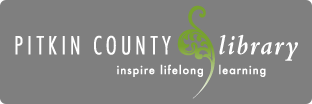What Is a Resume?
A resume highlights your skills, experience, and value. Employers often scan resumes in seconds, so clarity and focus matter. Keep the information targeted to the job you want.
Resume Essentials
A strong resume includes:
- Name & contact information
- Professional summary
- Experience in reverse chronological order
- Education
- Skills
- Certifications or relevant trainings (optional)
Formatting Basics
- Font: Arial or Times New Roman
- Size: 10–12 pt body text
- Margins: 1 inch
- Color: Black or dark gray
- Paper: 8.5" × 11" (Letter)
- Keep the layout simple and easy to scan
Professional Summary Tips
- Keep it to 1–3 sentences
- Describe your strengths and focus
- Highlight your value to employers
- Place it directly under your name
Experience Section Tips
- Use bullet points
- Begin each bullet with a strong action verb
- Show results, improvements, and outcomes
- Add numbers when possible
- Remove unrelated or outdated roles
- Include relevant volunteer work if helpful
Skills Section Tips
- Keep skills short and specific
- Match your skills to the job posting
- Mix technical and people skills
- Avoid generic traits like “hard worker”
- Put your strongest skills first
Certifications
Certifications are short credentials that show you have completed training in a specific skill or topic. They can come from professional organizations, schools, libraries, or online programs.
Common Mistakes to Avoid
- Long paragraphs
- Outdated or unprofessional email
- Too many colors or fonts
- Vague language
- Missing dates
- Typos or grammar issues
- Unrelated jobs that distract from the goal
What Recruiters Look For
- Clear formatting
- Accurate dates and job titles
- Measurable results
- Job-aligned skills
- Correct spelling
- Concise writing
Recruiters often spend 7 seconds on the first scan—make it count.
Free Resume Resources
- Pitkin County Library Resume Template
- Templates on Google Docs and Canva
- Tools on Indeed and Microsoft Word
- GCF LearnFree for computer and job skills
- Colorado Workforce Centers for career help
- Grow with Google for free job-skill courses
- Purdue OWL and Grammarly for writing guidance
- Libraries for wifi, computers, and printing
